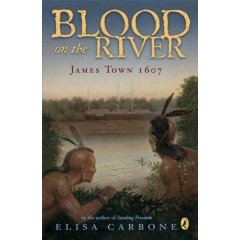 by Piers Mackesy
by Piers Mackesy
I’m not sure exactly why I picked this book up recently, but I’m awfully glad I did. It was orginally published in 1964 and then reissued in papeback by the University of Nebraska in 1993 – the copy I picked up from the sale table (in excellent condition) is apparently from the first print run – the book must have had a charmed life in its warehouse and retail odyssey.
Short version: an account of the American Revolutionary War from the British perspective.
Long version: the war for American Independence was a global, difficult, frustrating, maddening conflict. Complicated beyond belief for the British due to the difficulties of communication — with her far-flung outposts in America, the Carribbean, Gibraltar and India.
Surprise insight: The details of a navy dependent on winds and sails must be grasped if one is to understand how the events of the American Revolution unfolded. The British Army in the colonies (as well as elsewhere around the world) was totally dependent for supplies, transport and artillery support upon the British Navy’s command of the seas. Which is why the intervention of the French fleet in the conflict in 1781 was decisive. When the British Navy lost supremacy in the Caribbean and then in the Atlantic off Chesapeake Bay, disaster ensued.
Given the impossible burden of communcation and supply by sailing ships, it is a wonder that the British were able to hold out at all. Intervention by the French in the conflict was foreseeable, perhaps inevitable. When the Spanish Bourbons joined the French Bourbons, England was in trouble. When domestic unrest, first in Ireland, then in England itself broke out, the position of the crown became almost desperate. When the Dutch went from ally to enemy and a credible threat to invade England developed in the summer of 1779, it suddenly dawned on me why we were able to trap the small detachment of British army regulars at Yorktown in 1781 and force their surrender. The British were more than a little distracted. And all this time, I thought Washington and the continental army had out-generaled the entire British army – with just a little bit of help from some French volunteers.
That, of course, is an excellent illustration of the problem of bias in historical accounts. American textbook accounts of the American Revolution keep the spotlight exclusively on the Americans.
The reasons for the French intervention require some understanding of both the Seven Years War (known to us as the French and Indian War) 1756-1763 and of the longer Second Hundred Years War which involved global conflict between French and British colonial empires around the world (see my earlier post on all the world wars).
Final, intriguing lesson from Professor Mackesy: The extreme difficulty experienced by the British Army in restoring civil authority in the rebellious colonies. They could almost always defeat the Continental Army (and always defeated the Colonial Militia), but they could never establish control of the colonies they conquered and re-conquered. As an example, here is Mackesy’s description of the Continental commander in the South, Nathaniel Greene:
As long as Green’s army survived, a seeminly inexhaustible supply of militia rallied to it on the battlefield, while irregulars roamed the British foraging areas and terrorised the loyalists. Decisive vicyory could have broken the cycle. So might the weariness and exhaustion of the rebel militia, if the British army remained in being. But from indecisive victories, the British regiments could never recover. Nearly six years earlier [British General[ Murray had prophesied the danger: ‘if the business is to be decided by numbers, the enemy’s plan should be to lose a battle with you every week, until you are reduced to nothing.’
In the end, this is largely what happened.
– Rob Shearer
director, Schaeffer Study Center
postscript: for another recent, intriguing review, see Tom Donnelly’s review of Mackesy in the September 2006 Armed Forces Journal.
 Publisher’s Description: “Twelve-year-old Samuel Collier is a lowly commoner on the streets of London. So when he becomes the page of Captain John Smith and boards the Susan Constant, bound for the New World, he can’t believe his good fortune. He’s heard that gold washes ashore with every tide. But beginning with the stormy journey and his first contact with the native people, he realizes that the New World is nothing like he imagined. The lush Virginia shore where they establish the colony of James Town is both beautiful and forbidding, and it’s hard to know who’s a friend or foe. As he learns the language of the Algonquian Indians and observes Captain Smith’s wise diplomacy, Samuel begins to see that he can be whomever he wants to be in this new land.”
Publisher’s Description: “Twelve-year-old Samuel Collier is a lowly commoner on the streets of London. So when he becomes the page of Captain John Smith and boards the Susan Constant, bound for the New World, he can’t believe his good fortune. He’s heard that gold washes ashore with every tide. But beginning with the stormy journey and his first contact with the native people, he realizes that the New World is nothing like he imagined. The lush Virginia shore where they establish the colony of James Town is both beautiful and forbidding, and it’s hard to know who’s a friend or foe. As he learns the language of the Algonquian Indians and observes Captain Smith’s wise diplomacy, Samuel begins to see that he can be whomever he wants to be in this new land.”





